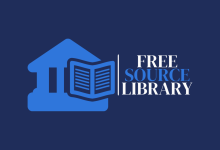Increasing Productivity with Minimal Effort: Part Two
In the fast-paced world we live in, optimizing productivity while minimizing effort is a goal many strive to achieve. Building on previous insights, this article delves into advanced strategies to enhance productivity with minimal exertion, allowing individuals to achieve more with less strain. The following techniques encompass time management, technology utilization, and lifestyle adjustments, all aimed at fostering a more efficient work ethic.
1. Adopt the Two-Minute Rule
The Two-Minute Rule, popularized by productivity expert David Allen, asserts that if a task can be completed in two minutes or less, it should be done immediately. This simple approach prevents small tasks from accumulating and becoming overwhelming. By addressing quick tasks right away—be it replying to an email, filing a document, or making a short phone call—you not only clear your to-do list but also maintain momentum throughout your day.
2. Utilize the Pomodoro Technique
The Pomodoro Technique is a time management method that promotes sustained concentration and breaks tasks into intervals, traditionally 25 minutes long, separated by short breaks. This approach helps maintain focus while minimizing mental fatigue. After completing four intervals, a longer break of 15 to 30 minutes is encouraged. By dividing work into manageable segments, this technique enhances productivity and allows for efficient energy management.
3. Leverage Technology and Automation
In the modern workplace, technology can be a significant ally in enhancing productivity. Utilizing tools that automate repetitive tasks can save time and reduce cognitive load. For example:
- Email Filters and Rules: Set up filters to automatically categorize incoming emails based on sender or subject. This reduces time spent sifting through your inbox.
- Task Management Apps: Tools like Todoist, Asana, or Trello can streamline task management, allowing for prioritization and scheduling without the clutter of paper lists.
- Keyboard Shortcuts: Learning and utilizing keyboard shortcuts can drastically reduce the time spent navigating software applications, freeing up valuable time for more critical tasks.
4. Prioritize Tasks with the Eisenhower Matrix
The Eisenhower Matrix is a powerful decision-making tool that helps prioritize tasks based on their urgency and importance. By categorizing tasks into four quadrants:
- Urgent and Important: Tasks that require immediate attention.
- Important, but Not Urgent: Tasks that can be scheduled for later.
- Urgent, but Not Important: Tasks that can be delegated.
- Neither Urgent nor Important: Tasks that can be eliminated.
This method empowers individuals to focus on what truly matters, ensuring that time is spent on activities that yield the highest returns.
5. Establish a Morning Routine
A well-structured morning routine can significantly boost productivity throughout the day. Establishing a set of practices that energize and prepare the mind for work can lead to enhanced focus and efficiency. Consider incorporating activities such as:
- Mindfulness or Meditation: Spend a few minutes in silence or meditation to clear the mind and reduce stress.
- Physical Exercise: Engaging in light exercise or stretching can stimulate blood flow and enhance cognitive function.
- Healthy Breakfast: Nourishing the body with a balanced meal can improve energy levels and concentration.
6. Limit Multitasking
While multitasking may seem like an efficient way to handle several tasks simultaneously, research shows that it can reduce overall productivity. Focusing on one task at a time leads to higher quality work and faster completion times. Train yourself to concentrate on one task until it is finished before moving on to the next, minimizing distractions and fostering deeper engagement.
7. Set Boundaries and Manage Distractions
Creating a work environment conducive to productivity requires setting clear boundaries. This includes:
- Designating Work Hours: Establish specific hours during which you focus solely on work-related tasks, minimizing distractions from family, social media, or other interruptions.
- Using Focus Tools: Applications like Freedom or Cold Turkey can help block distracting websites and notifications during work periods, enabling sustained concentration.
8. Practice the Art of Saying No
One often-overlooked strategy for increasing productivity is the ability to say no. Overcommitting can lead to burnout and decreased efficiency. Assess new commitments against your current priorities and obligations, and don’t hesitate to decline tasks that do not align with your goals or that would overwhelm your schedule.
9. Reflect and Adjust
Regular reflection on your productivity practices can yield significant insights into what works and what doesn’t. Consider setting aside time weekly to review your accomplishments, assess challenges, and adjust your strategies accordingly. This iterative approach allows for continuous improvement and fine-tuning of your productivity techniques.
10. Embrace Flexibility
Finally, being flexible in your approach to work can enhance productivity. Life is unpredictable, and rigid schedules can lead to stress and inefficiency. Embrace the possibility of adjusting your tasks and timelines as needed, allowing for greater adaptability to unforeseen circumstances.
Conclusion
Enhancing productivity with minimal effort is a multifaceted endeavor that involves adopting efficient techniques, leveraging technology, and maintaining a balanced lifestyle. By implementing strategies such as the Two-Minute Rule, Pomodoro Technique, and the Eisenhower Matrix, individuals can significantly improve their productivity levels. Moreover, prioritizing mental and physical well-being through structured routines and flexibility fosters a more sustainable approach to work.
In a world where time is precious, embracing these methods not only allows for greater productivity but also contributes to a more fulfilling and less stressful work life. With continued practice and refinement, anyone can cultivate a productive environment that maximizes output with minimal effort, ultimately leading to greater personal and professional satisfaction.
